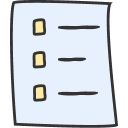
Whole Week Overview
Overview:
This week students will learn about how to define and identify tone. They’ll analyze different mediums of texts to identify tone, write tone statements, and discuss shifts in tone.
Standards:
CCSS.ELA-LITERACY.RL.3.7/4.7/5.7
Analyze how visual and multimedia elements contribute to the meaning, tone, or beauty of a text (e.g., graphic novel, multimedia presentation of fiction, folktale, myth, poem).
Resources:
- Teacher Guide
- Daily Powerpoints with Teacher Notes
- Printable Passages, Notes, Activities, Warm Ups, and Exit Tickets
- Short Standards-Focused Assessment

Day 1 - Introduction
Launch
Introduce the definition of Tone with our guided notes and lead a whole class discussion on the phrase, “Don’t use that tone with me!”
Core Instruction
Using the guided notes and handouts, you’ll introduce how authors reveal tone and begin identifying tones of texts. We also provide your students with a “Tone List” to reference all week.
Guided Practice
Annotate the provided passage as a class and begin crafting tone statements about a given text, as well as indications of a shift in tone. The handouts include scaffolding to make writing these statements less intimidating at first.
Independent Practice
Students will independently read a new passage, annotate, identify tone, and craft a tone statement. Exit tickets and checks for understanding are built into the Powerpoint as well.

Day 2 - Whole Class Practice
Launch
Review the definition of tone and practice saying the word “Yes” using a dozen different tone words provided in the powerpoint.
Partner Practice
Students will work with a partner to read a new passage, annotate, identify tone, and craft a tone statement.
Independent Practice
Students will use the scaffolded handout to craft their own “Tone Story.” Students will share these with the class and the class will identify the tone and provide justification for their answers. Exit tickets and checks for understanding are built into the handouts and Powerpoint.

Day 3 - Independent Practice
Launch
Introduce the definition of Tone with our guided notes and lead a whole class discussion on the phrase, “Don’t use that tone with me!”
Core Instruction
Using the guided notes and handouts, you’ll introduce how authors reveal tone and begin identifying tones of texts. We also provide your students with a “Tone List” to reference all week.
Guided Practice
Annotate the provided passage as a class and begin crafting tone statements about a given text, as well as indications of a shift in tone. The handouts include scaffolding to make writing these statements less intimidating at first.
Independent Practice
Students will independently read a new passage, annotate, identify tone, and craft a tone statement. Exit tickets and checks for understanding are built into the Powerpoint as well.

Day 4 - Group Practice
Launch
Introduce the definition of Tone with our guided notes and lead a whole class discussion on the phrase, “Don’t use that tone with me!”
Core Instruction
Using the guided notes and handouts, you’ll introduce how authors reveal tone and begin identifying tones of texts. We also provide your students with a “Tone List” to reference all week.
Guided Practice
Annotate the provided passage as a class and begin crafting tone statements about a given text, as well as indications of a shift in tone. The handouts include scaffolding to make writing these statements less intimidating at first.
Independent Practice
Students will independently read a new passage, annotate, identify tone, and craft a tone statement. Exit tickets and checks for understanding are built into the Powerpoint as well.

Day 5 - Assessment
The Assessment
Hand out the assessment for students and then go over the directions:
- Read the passage carefully.
- Highlight/circle details that communicate the tone.
- Write a tone statement about the passage.
Students will also be asked to apply what they’ve learned to a photograph.